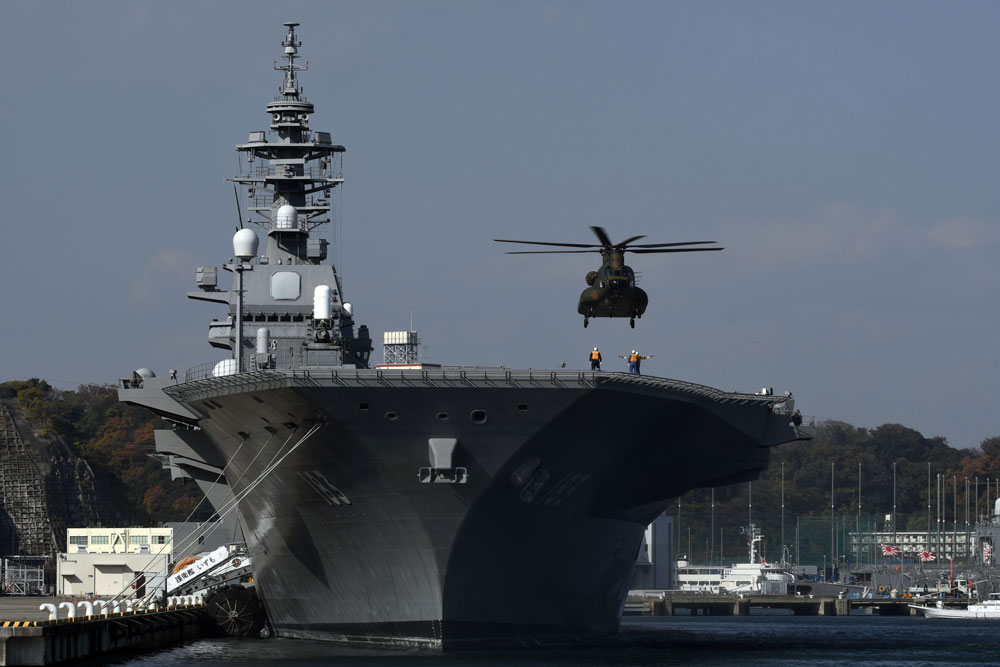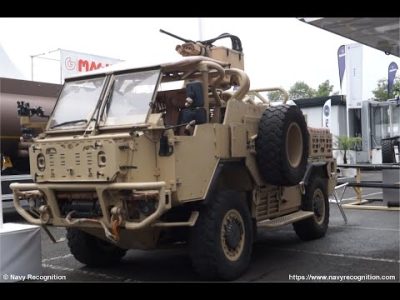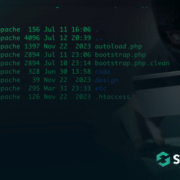Published on 07/17/2021 – Last Updated on 07/17/2021 by OTC
Two ships are officially designated as helicopter destroyers. But are they helicopter destroyers or aircraft carriers? There is a reason why Japan prefers to use helicopter destroyer definition The biggest Japanese warship since the Second World War, the Izumo-class, is one of the most important symbols of the change in the Asia-Pacific region. However, due to its constitution, Japan cannot have an offensive weapon system such as an aircraft carrier.
For modern weapon systems, it is always hard to find a solid mission definition. It is because they can conduct both offensive and defensive duties. For example, a destroyer is an escort ship. Its mission definition is to protect the fleet. But current destroyers have an offensive capability that is much greater than the Second World War battlecruisers.
It could not be said that an aircraft carrier is just an offensive system and a single type of naval vessel. There are many subtypes of it. With its supercarriers, the USA can rule the seas and conduct operations against any nations overseas.
The medium-type aircraft carriers of China, the UK, France, and Russia are competent. But they can control only some areas, and they are not a real threat for many countries. The small aircraft carriers are an ideal platform for anti-submarine warfare duties, supporting multi-national operations, or fighting against countries with limited military capability.
So, the Izumo-class can be defined as an aircraft carrier rather than a helicopter destroyer. Still, its offensive capabilities cannot be compared to the aircraft carriers of the USA, the UK, China, and Russia.
General Features
The first ship of this class, JS Izumo, was laid down in 2012. She was launched on August 6, 2013, the 58th anniversary of the atomic bombing on Hiroshima. The ship was commissioned in 2015. The second and last Izumo-class vessel, JS Kaga, was commissioned two years later. The complement of the Izumo-class is 970-person.
Its empty weight is 19,500 tons, while its fully-loaded displacement is 27,000 tons. The ship has 248 meters, a beam of 38 meters, and a draught of 7.5 meters. The combined gas and gas configuration propulsion system consists of four 33,525 horsepower
GE/IHI LM2500IEC gas turbines. The maximum speed of the Izumo class is 30 knots. The ship has two Mk 15 Phalanx and two SeaRAM close-in weapon systems. The Izumo-class has a unique design, which reduces the radar cross-section. The air traffic control room at the rear of the bridge has a panoramic view of the flight deck. The OPS-50 active electronically scanned array radar performs both air search and air traffic control missions. Different from other OPS-50 radars on the other Japanese vessels, it has only C-band search antennas. Because there are no long-range weapon systems on the Izumo-class, the X-band tracking antennas have been eliminated.

The Izumo-class has a heavy bow-mounted sonar. It is not for is anti-submarine warfare missions but to detect a possible torpedo attack. The ship has two large elevators for the aircraft. Also, there are three small elevators, two of which carry ammunition, and one is connected to the medical facilities. The medical facilities include a 35-bed hospital, operating rooms, intensive care units, and dental treatment units.
The gas turbines have electronic fuel control systems and are controlled from the bridge. The Izumo-class can produce 60 tons of fresh water per day. Some of this water is used to clean the flight deck after air operations.
It can refuel other ships at sea and also transfer freshwater. But, the vessel cannot transfer aviation fuel. The Izumo-class has two hangars and one maintenance facility.
Each hangar can accommodate up to six helicopters, while the maintenance facility has room for two others. In a typical mission, the Izumo-class carries seven SH-60K anti-submarine warfare and two MCH-101 utility helicopters. But, the ship can accommodate 28 aircraft. Five helicopters can be operated simultaneously.
One SH-60K always waits for an alert on the deck. This helicopter rotates another one every few hours to avoid damaging the sun and salty water. The ship can carry up to 400 marines to support amphibious operations and the same number of people in the disaster relief operations.

F-35’s to change the mission of Izumo Class
Currently, the Izumo-class can not operate fixed-winged aircraft. Yet, in 2018, Japan decided to modify these ships to make them suitable for the F-35Bs and V-22s. The conversion of JS Izumo began in 2020. It is a two-stage plan. At first, the decks of the ships will be reinforced to endure the additional weight of the F-35B, as well as the heat and forces from the jet engines during vertical landing. As the second phase of the conversion work, each vessel’s current trapezoidal flight decks will be modified into a square shape. The Izumo-class will not be fitted with a ski-jump ramp. Because together with the heavy bow-mounted sonar of the ship, the ski-jump ramp could cause a balance problem. Also, the hangars and the maintenance facility will be modified. Japan has already ordered 42 F-35Bs. The US Marine Corps plans to operate its F-35Bs from the Izumo-class to train Japanese forces to operate this aircraft.
Does Japan need an aircraft carrier?
The East China Sea is a problematic area. All countries in the region have sovereignty claim disputes. The Chinese Navy has to use the Miyako Strait to sail the Pacific. This approximately 250 kilometres wide strait lies between Miyako and Okinawa Islands. Naha Air Base on Okinawa Island is the southernmost fortress of the Japan Air Self-Defense Force.
But, it is too far from the nearest airbases on Kyushu Island. Between them, there is a gap of over 700 kilometers. So, to control this vast area, an aircraft carrier is the best option for Japan. Of course, there are some other auxiliary airfields in the region. But, they are not capable of housing a large number of fighters safely.
In case of war in the south, Japan has to concentrate its airpower in the Naha Air Base. However, it would not be wise to deploy many aircraft in a single place, considering the long-range strike capability of the Chinese H-6K bombers.
Conclusion
An aircraft carrier could quickly solve this problem. With the Izumo-class ships, the Japan Maritime Self-Defense Force can operate far from the air cover of the Japan Air Self-Defense Force. It gives defensive depth to Japan. The Izumo-class is one of the most shining symbols of the new world order. Two ships of this class have constantly joined multi-national naval exercises. They gave the message that the region needs Japan to balance China.
Check out Naval Library App to find out the specifications of Izumo-class carriers.
















Comments